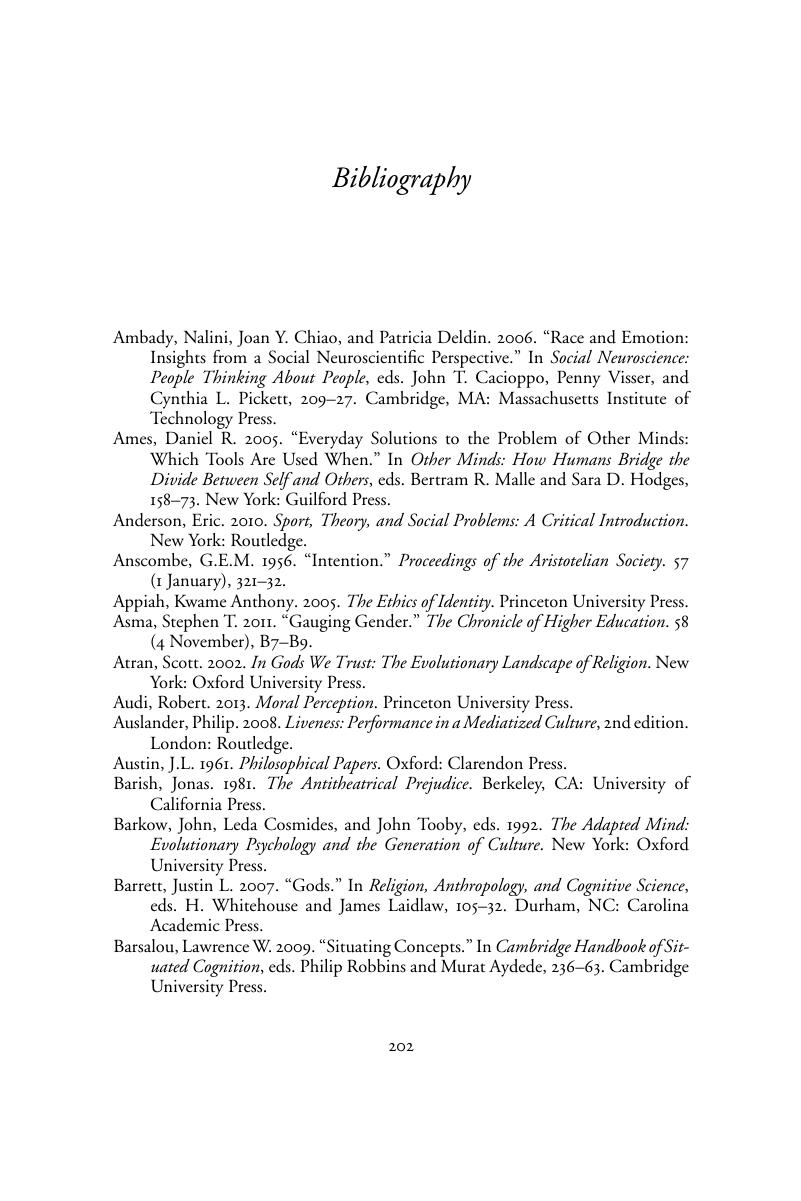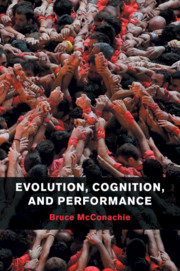Book contents
- Evolution, Cognition, and Performance
- Evolution, Cognition, and Performance
- Copyright page
- Dedication
- Contents
- Book part
- Introduction
- Chapter 1 Enaction, evolution, and performance
- Chapter 2 Rituals, image schemas, and cultural-cognitive ecosystems
- Chapter 3 Sociality, emotions, and empathy
- Chapter 4 The dynamics of making meanings
- Chapter 5 A Deweyan ethics for performance studies
- Bibliography
- Index
- References
Bibliography
Published online by Cambridge University Press: 05 December 2015
- Evolution, Cognition, and Performance
- Evolution, Cognition, and Performance
- Copyright page
- Dedication
- Contents
- Book part
- Introduction
- Chapter 1 Enaction, evolution, and performance
- Chapter 2 Rituals, image schemas, and cultural-cognitive ecosystems
- Chapter 3 Sociality, emotions, and empathy
- Chapter 4 The dynamics of making meanings
- Chapter 5 A Deweyan ethics for performance studies
- Bibliography
- Index
- References
Summary

- Type
- Chapter
- Information
- Evolution, Cognition, and Performance , pp. 202 - 215Publisher: Cambridge University PressPrint publication year: 2015



